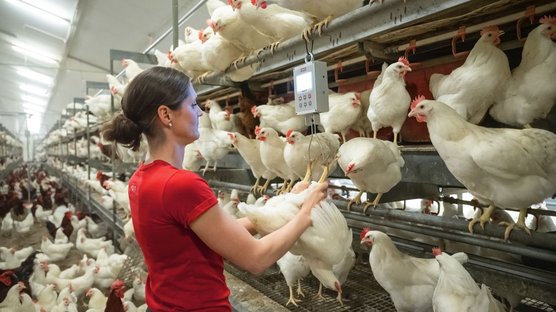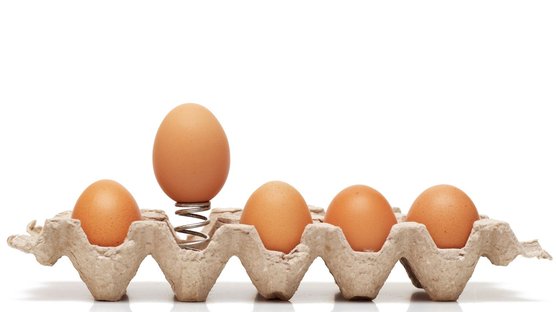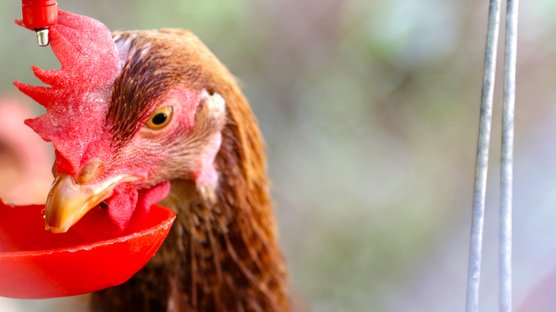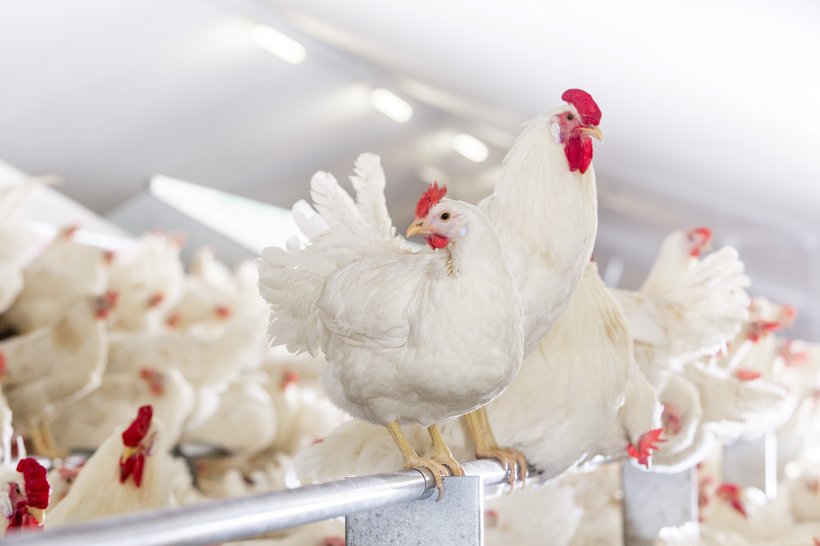
Published on Aug. 10, 2021
Effective breeder management in hot climates
Managing breeder flocks in high temperature climates is an even greater challenge than managing flocks of the same genetics in temperate climates. Effective breeder management includes several factors in both rearing and production: Body weights, Flock uniformity, Lighting program, Feeding technique, Male management, Hatching egg handling.
Preparing parent stock for their (re)productive life starts during the rearing period. A strong correlation exists between the five-week-old body weight and the laying persistency later in life, this is also true for the breeders’ livability during the production period. The same applies to the uniformity of the 16-week-old pullets, this strongly correlates with egg production (Fig. 1). The objective of the rearing period is to obtain the best possible body weight at five weeks of age, and good 16-week flock uniformity. The use of good quality starter feed in the form of crumble, fresh and clean drinking water, easy access to water and feeders for all the chicks, and a healthy barn climate all contribute towards a great start of the day-old chicks.
The pre-starter feeding period should be extended for birds in hot climates (Fig. 2). Vaccination procedures should also be always applied correctly to ensure good responses and maximum protection during the production period. Overall health status can be monitored by regularly checking flocks for the presence of the main pathogens(consult your local veterinarian, for tailor made advise).
Bodyweight
Especially in hot climates a drop in egg production can be observed after a normal onset of lay, this is called the post-peak dip. The birds struggle to reach and maintain their target body weights, low body weight at the start of lay can lead to increased mortality (result of prolapse), but also lower egg laying persistency, resulting in lower total egg mass.
This drop in egg production is often caused by a too low energy intake. Energy requirements are determined by the following factors: maintenance, egg production, and growth. From 18-35 weeks, breeders still grow, but the parent stock females start to produce at the same time. Unfortunately feed intake capacity is still too limited at the onset of lay and does not meet the total requirements for energy and nutrients, resulting in a deficiency. We strongly advise to check body weights regularly to make sure requirements for growth, performance and maintenance are respected.
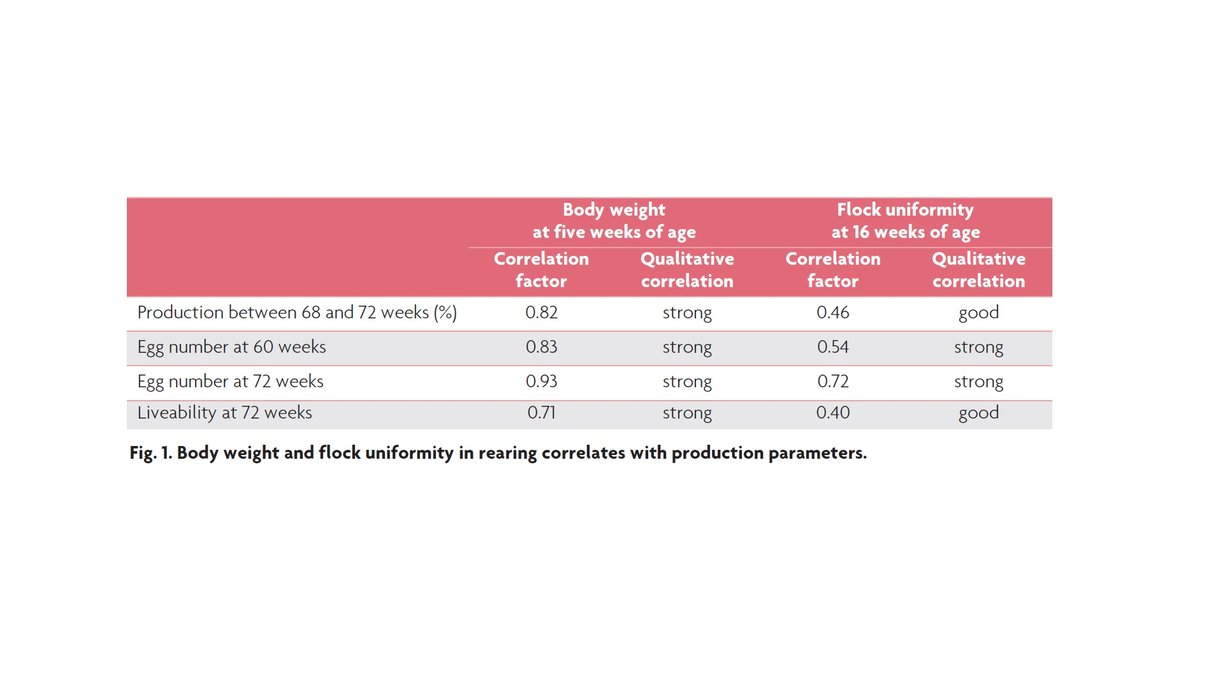
Lighting program and feeding technique
Egg size directly influences chick size as the day-old chick weight is considered to be 66% of the hatching egg weight. Light stimulation programs serve as a management tool to steer egg size. However, if light stimulation has started too soon, early egg production is stimulated, resulting in a lower overall egg size, but also an increased risk of prolapse. In breeder / parent stock flocks it is advised to start light stimulation at the onset of lay (when birds are at 2% of lay). Golden rule: never start with light stimulation of parent stock before 18 weeks of age. In hot climates, light stimulation should be done in the morning hours (as this is in general the cooler period). Next to this it is preferred to apply midnight feeding (provide the flock with two hours of light, three hours after the lights have been switched off). The midnight feeding is preferred to stimulate overall feed intake. Feeding techniques can influence eggshell quality and as hatchability is linked with eggshell quality, feeding techniques can affect hatchability. At the end of the rearing (when using the pre-layer diet) calcium supply should be sufficient to achieve robust medullary bone and a strong overall skeleton, as this will minimize bone decalcification later in life and improve overall hatching eggshell quality.
During the production period, provide coarse calcium particles (2-4mm) that dissolve slowly and stimulate the use of calcium from feed instead of bone for calcification process in egg formation. Feed should be provided mainly in the afternoon (minimum 60%) and midnight feeding is strongly advised. If drinking water is too warm, the parent stock males and females will reduce water intake and consequentially they reduce feed intake, resulting in lower egg production and decreased hatching eggshell quality.
Male management and egg handling
The main actions to prevent a delay in hatching egg production or a reduction in fertility and hatchability are:
- Prevent regrouping of the parent stock males, especially towards the end of rearing. If regrouping is observed, separate males immediately and progressively reintroduce them at the start of lay.
- Disinfect hatching eggs as soon as possible on the farm to reduce initial contamination of the eggshell and perform a second disinfection at the hatchery.
- At the moment of transfer include only 5% of parent stock males and reintroduce the remaining males progressively.
- Always handle the hatching eggs with care, don't forget that chick quality is also influenced by handling of hatching eggs.
- Store the hatching eggs always in temperature-controlled areas (16°C +/- 2°C) to avoid too much early embryonical development during storage, as this could result in a higher proportion of early deaths during the incubation process..
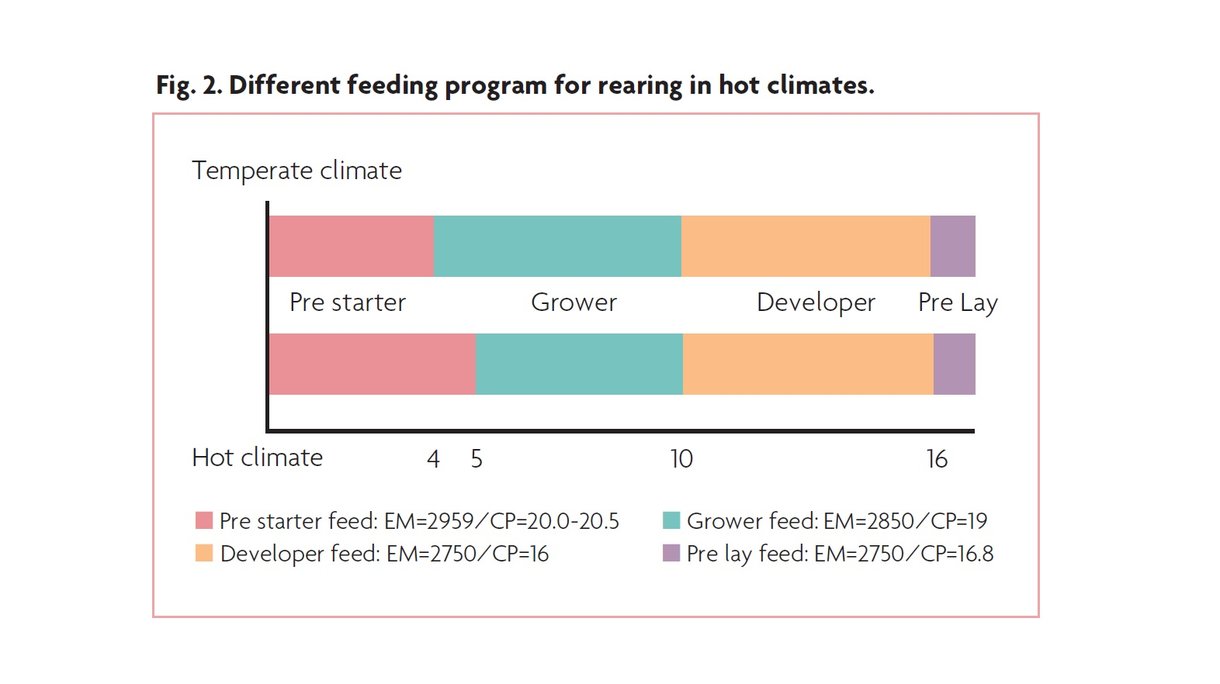
Key points
Effective breeder management allows a flock to express their genetic potential and have a long and successful production cycle. The key points in good management are body weight, flock uniformity, lighting program, feeding technique, male management, and hatching egg handling.
Finally, make sure you are familiar with the genetic potential of your birds and their breed specific management requirements.

